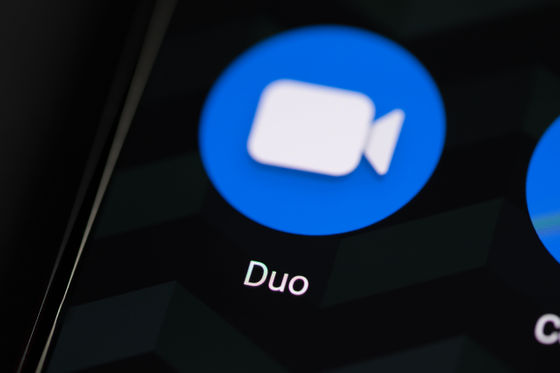A unique engineer who traveled between Twitter and Google talks about ``differences in corporate culture''

From Google to Twitter (initial thoughts)
https://ma.nu/blog/from-google-to-twitter
Mr. Cornet is an engineer who has been involved in the development of Gmail and Android for many years at Google, and is also a cartoonist who publishes art works such as ' Goomics ', a cartoon series based on his experience working at Google. However, perhaps because there were troubles such as being noticed by the company's human resources department for ' Twittoons ' drawn after changing jobs to Twitter, it became the first target of layoffs after the acquisition by Mr. Elon Musk.
https://t.co/4SPYyNYmjG
—ma.nu (@lmanul) November 20, 2022
On Mastodon: https://t.co/AWWy5An82X pic.twitter.com/5HoLgw3Ktq
Cornet summarized the differences between Google and Twitter cultures as follows:
◆ Internal communication
According to Mr. Cornet, on Twitter, all interactions are done in Slack. This includes communication ranging from one-on-one chats to team discussions, asking questions to your boss, requesting code reviews, and small talk. Therefore, it seems that it is not uncommon for Twitter to not check work-related emails for several days. Conversely, with Google, which does most of its communication via email, this is not possible.
Cornett said, ``Searching Slack is more likely to find information related to your problem than searching the internal system, but if Slack goes down, productivity and access to the knowledge base will be severely affected. It will have a big impact,' and evaluated that both had advantages and disadvantages.
◆ Outsourcing
While Google likes to build almost all their own solutions, Twitter outsources a lot. Specifically, Google has its own tools such as bug tracking systems, emails, calendars, office suites, code review systems, and internal communication, but Twitter uses Jira for bug tracking and project management, and scheduling. External software and systems were actively used, such as using Google Calendar and WorkDay for personnel management. Reflecting this attitude, Twitter seems to tend to use technically open technology.
As an episode right after he changed jobs from Google to Twitter, Mr. Cornett said, ``When I was told to install Duo (authentication system) on my smartphone after joining the company, I was slightly puzzled, saying, 'I don't think it's the chat app Google Duo .' I'm sorry,' he said.

by
◆Device you are using
Twitter is technically open, so Cornett expected that employees would work in an open environment such as Linux, but in fact 99% of Twitter employees use Mac laptops. That's what I'm talking about.
On the other hand, all Google engineers carry heavy-duty laptops, use powerful machines via the cloud, and it's very common to run anything remotely, Cornet said.
◆Meeting
Mr. Cornett occasionally receives questions about which Google and Twitter emphasize meetings, but there is no clear difference. In Cornett's experience, whether a meeting is important or not depends more on the team or project you're in at the time than the company.
◆ Remote work
Twitter is generally open to remote work, so teams tend to be geographically dispersed. On the other hand, Google also accepted remote work to some extent due to the pandemic of the new coronavirus infection, but not as much as Mr. Cornett expected. According to Cornett, this difference comes out because Twitter has more overseas bases than can be imagined from the size of the company and doesn't care about geographically distributed teams.

◆ Side job
Both Google and Twitter have introduced a system called ``
On the other hand, Twitter also runs ' Hack Weeks' during certain weeks when employees leave their company's assigned projects to work on their own projects. Mr. Cornett seems to prefer Hack Week, which makes it clear to his colleagues when he doesn't have to do his original work.
◆ Gender diversity
This is based on Mr. Cornet's experience, so there may be a bias in the sample, but Twitter engineers tend to have more women. As a result, Twitter happened for the first time in his career, saying, `` Among the three or four engineers in the virtual chat room, only one man is Mr. Cornet. Cornet, who is also a feminist, says, 'This is absolutely wonderful.'
◆Technical skills of managers
This is also the extent of Mr. Cornet's experience, but Twitter's manager is not a very technical person. At Google, on the other hand, the engineers were led by someone who, in a week or two, could do almost everything that Mr. Cornett did faster and better than Mr. Cornett.

◆ Sense of distance with leaders
In the past, Google used to communicate fairly openly between employees and leaders at the weekly company-wide meeting ( TGIF ), but recently it has become less open. On the other hand, while Twitter's OneTeam is still fairly open, Cornett said the question-and-answer process that takes place on Slack is rather cumbersome.
◆ Documentation and comments
Although there is no objective data, Twitter engineers are not very active in adding comments and documentation to the code. In this respect, many teams at Google are similar, but Twitter is more terrible.
◆ Code ownership and granularity
'Ownership' in this case is a mechanism that requires permission from the owner to change the code so that the code cannot be rewritten without permission. At Google, the granularity of this ownership is low, meaning that different sections of the software are managed by different people, and the longer you are involved in the project, the more fragmented and complex the ownership tree will be. Twitter, on the other hand, has an 'all or nothing' approach, allowing the owner of an application to change any code.
◆ Code review
Twitter's code review process was quick, but it was also labor intensive. This is because you have to decide who to review the code you have written, and you have to ask clearly using Slack etc. when requesting. On the other hand, Google has an in-house tool for code reviews, and when changes are made to the code, reviewers are automatically suggested based on ownership and employee attendance status.
Related Posts:
in Software, Posted by log1l_ks







